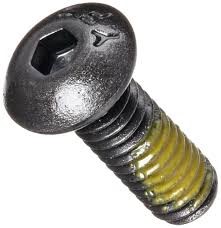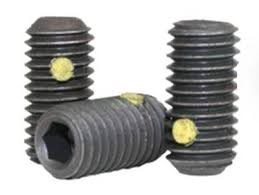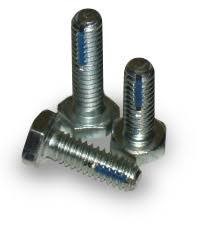Part three of our series on fastener locking methods will focus on nylon patches and plugs.
Nylon Patches
Nylon patches have some similarities to adhesive patches as they are both applied prior to arriving at the customer and they cannot be forgotten, but this is where the similarity ends.
Nylon patches are a hard, nylon material that is applied as a powder, and then melted into the threads with heat. The nylon material is typically NOT a 360° patch, but only applied on one side of the threads. The material is soft enough to form threads into it during assembly, but hard enough to create additional friction on the opposing side of the patch. This patch has some re-usability as it does not cure like an adhesive after assembly, but remains hard. Most manufacturers claim some locking effectiveness up to 3 to 5 times of complete dis-assembly and re-assembly. Applications which require minute adjustments without complete dis-assembly can benefit from this style of patch.

Nylon Plugs
Nylon material can also be added to the threads in the form of plugs or strips.


This method of application requires machining of the screws and pressing in the nylon plug or strip. While slightly more expensive to manufacture, some customers still prefer plugs over patches and believe they achieve improved performance with this style.
Some notable advantages of nylon over adhesive are a longer shelf life under ideal storage conditions and the possibility to re-use.
For more information on nylon locking features, or to help you decide which locking method is right for your application, check out www.bossard.com or contact us at ProvenProductivity@bossard.com.
For more shopping options click here.
Doug Jones
Applications Engineer
djones@bossard.com




